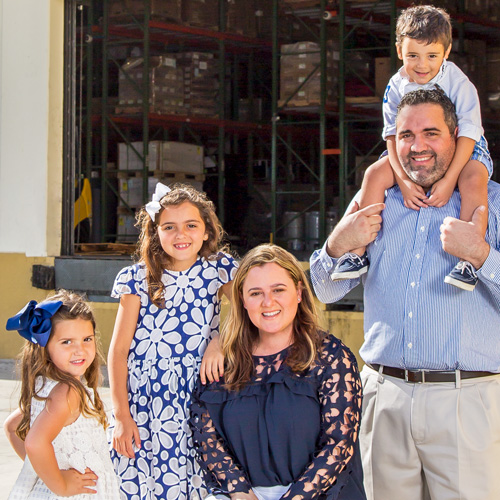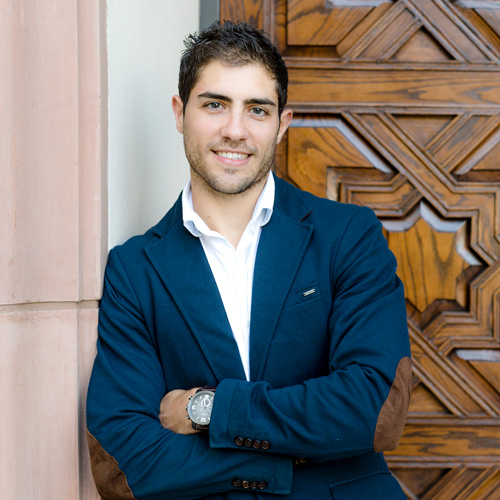“They never let me leave,” Natalie Hidalgo jokes about her time at New York University. Hidalgo started at NYU in 2003 as an undergraduate student. “By October, I had a job in housing as a student worker. It was during my junior year that a friend told me about her great job in IT.”
Hidalgo interviewed with the university’s IT department and got the job. “Getting to experiment with technology was the best introduction to working in IT that I could hope for.”
That job began a career with the private university, and has taken her from residential networking to service delivery to director of strategy. Still, her interest in technology began long before she started working in NYU’s IT department.
“I grew up in East Harlem in the 1980s,” Hidalgo says. “We weren’t really allowed to play outside because the neighborhood was notoriously dangerous. So, my older brother and I found ways to explore the world without leaving our sixth-floor apartment. We read and played video games. We ventured into different worlds where we could rescue people, race cars, and explore galaxies. I had a genuine curiosity about how things work.”
At each step in her impressive and still-young career, Hidalgo learned more about herself and her abilities. Here, she walks Hispanic Executive through each role she’s held at NYU.
Residential Networking Coordinator, Information Technology
After graduating from NYU, this was Hidalgo’s first full-time job. “It’s where I learned positive examples of what a work environment should be,” Hidalgo says. “I learned how much I liked working with the talented people of NYU.” This role served as her primer on foundational technology skills, networking, and how to support technology functions.
Computer Facilities Manager, Information Technology
When a new technology lab was launched, Hidalgo became its manager. This was the fourth such lab on NYU’s campus, and Hidalgo wanted to give it a unique personality. She wanted students to know as soon as they stepped inside what that lab was designed for: group work, solo work, studying, and practicing presentations. As such, she had to think holistically about user experience. She planned accordingly with layout and inclusion of white boards and easily-movable furniture.
Service Delivery Manager
When Hidalgo met with her managers to discuss this job, they said, “Get ready for the best job in the world.” Hidalgo describes this as one of the most interesting jobs she’s held, and she says it was one of the most important roles of her career. It was a new position at the university and was purposefully left ambiguous to give workers the ability to figure out how it would fit into the larger IT function.
“I describe it as being responsible for anything and everything IT-related,” she says.
It became her job to solve technology problems that occurred in campuses around the world. She handled technical issues that varied because of their locations and student needs.
“This is where I really learned the importance of influence, getting people to buy in, and developing approaches to problem-solving,” Hidalgo says. “I learned to listen to people. I would meet with clients around the world and learn about what their technology environment was like, and I had to use that information to deliver technical solutions that met our standards and their needs.”
In short, it was her responsibility to replicate NYU’s technology experience around the world. “NYU has a huge global footprint,” she adds.
She developed relationships with local vendors and simultaneously had to be mindful about cultural differences and how to conduct business as an American. She learned what it meant to conduct business as a woman in different cultures.
“I love that I had that opportunity,” she says. Her experience working globally, and the chance to travel around the world, are invaluable to her. She traveled to Accra, Ghana; Berlin, Germany; London, England; Florence, Italy; Prague, Czech Republic; and Tel Aviv, Israel. Across those locations, technology issues varied from structural limitations to caring for centuries-old estates. “Because we are at NYU, we have a shared vision. We know NYU’s mission, and we all, across the world, do what we can to support it.”
Service Coordinator, Instructional Technology
The role began as a short-term opportunity, but Hidalgo stayed for two years. She put together a task force to assess how the university was providing instructional technology support to its faculty. The task force consisted of professors, IT professionals, and other university staff to create recommendations on enhancing the instructional support model.
She worked in New York City alongside several departments: libraries, the office of academic assessment, digital studio, center for advancement of teaching, and other service teams within the IT function.
“I had to foster relationships to get buy-in to our goals,” Hidalgo says. “It diversified my portfolio; I hadn’t yet worked directly with the academic community and faculty. Here, I knew I was making an impact.”
Team Lead, Global Service Delivery
Hidalgo returned to her work managing technology and solving IT problems around the globe—this time, as a manager. Before, she operated mostly solo; in this role, she learned the importance of teamwork and camaraderie.
“Up until then, I’d always been accountable for only myself,” Hidalgo explains. “In this role, I really had to mature the service offering and work on team-building in a way I didn’t have to before. It’s easy to forget that as one progresses through their career, there’s an incredibly important human element.”
She had to ensure that her team not only completed goals and served the university, but that each member of her team was growing, learning, and happy with their work in the IT function.
Assistant Director, Service Delivery
When Hidalgo was promoted to assistant director, her job changed from managing a team to thinking strategically about expansion. She thinks about new global sites and departments that can be added to NYU’s global and technological footprint.
“It’s about the road map, and what the future should be for NYU,” she says.
She’s based in New York City, though some members of her team travel. What’s new in this role is the way sites and vendors are managed: the team uses an account management structure and client portfolios. Each team member has different geographical sites in their portfolio, referred to as accounts. This is a common practice in corporate America, but not in higher education. Whereas a corporate account would be tied to sales, these accounts are tied to client advocacy and how technology can enable the community.
“There’s a vulnerability there—for the right reasons,” Hidalgo explains. “We want to keep our finger on the pulse of the client community. We want to know how we can serve them better, in order to be constantly meeting their needs.”
Hidalgo has had ample opportunity to be curious and to help people throughout her roles at NYU. Her long-term goal is to serve as a chief information officer, hopefully in higher education.
“To have worked in the majority of the moving parts that make IT at NYU work is something that sticks with you,” Hidalgo explains. “It’s empowering, because you’re thinking, ‘I can impact change on such a large scale.’ That strong purpose motivates you, each day, to want to make a difference.”

